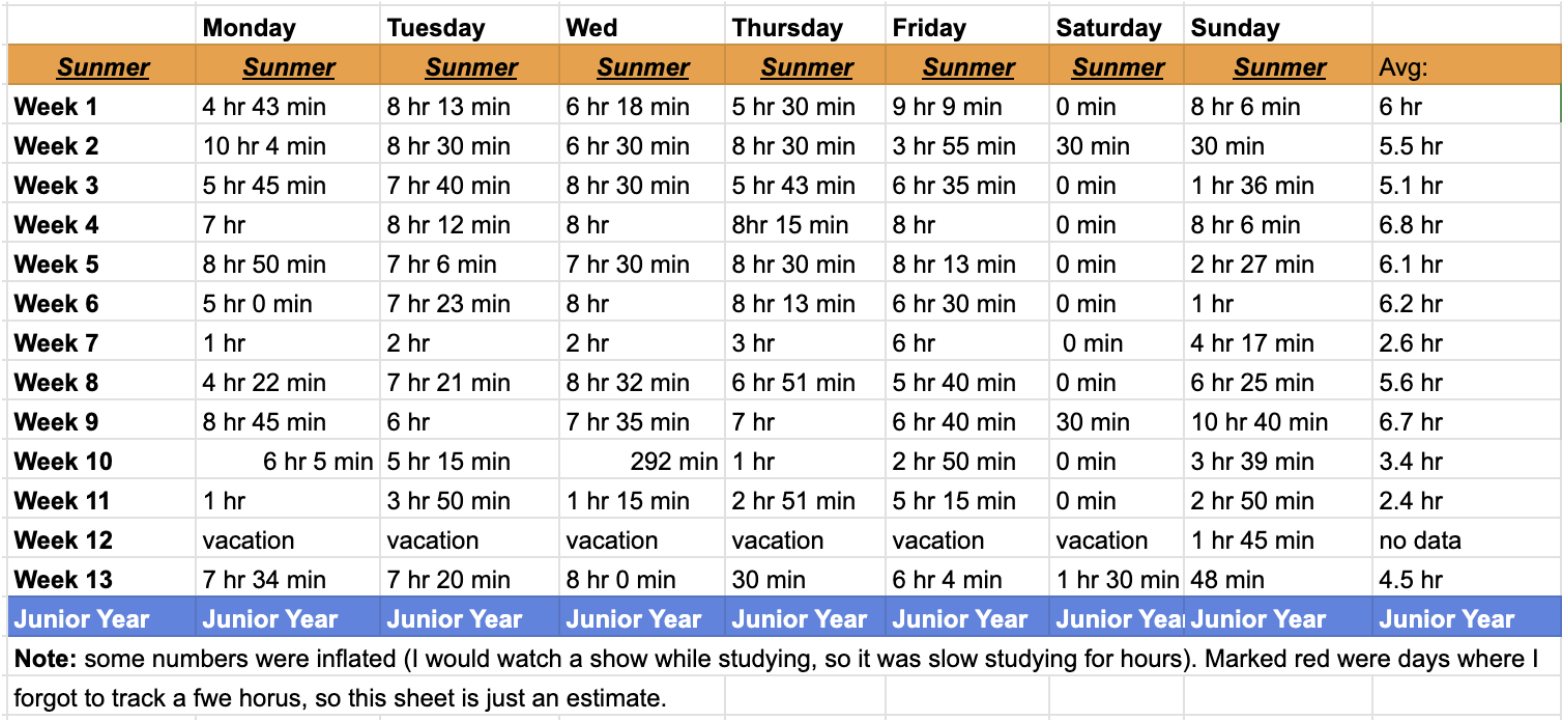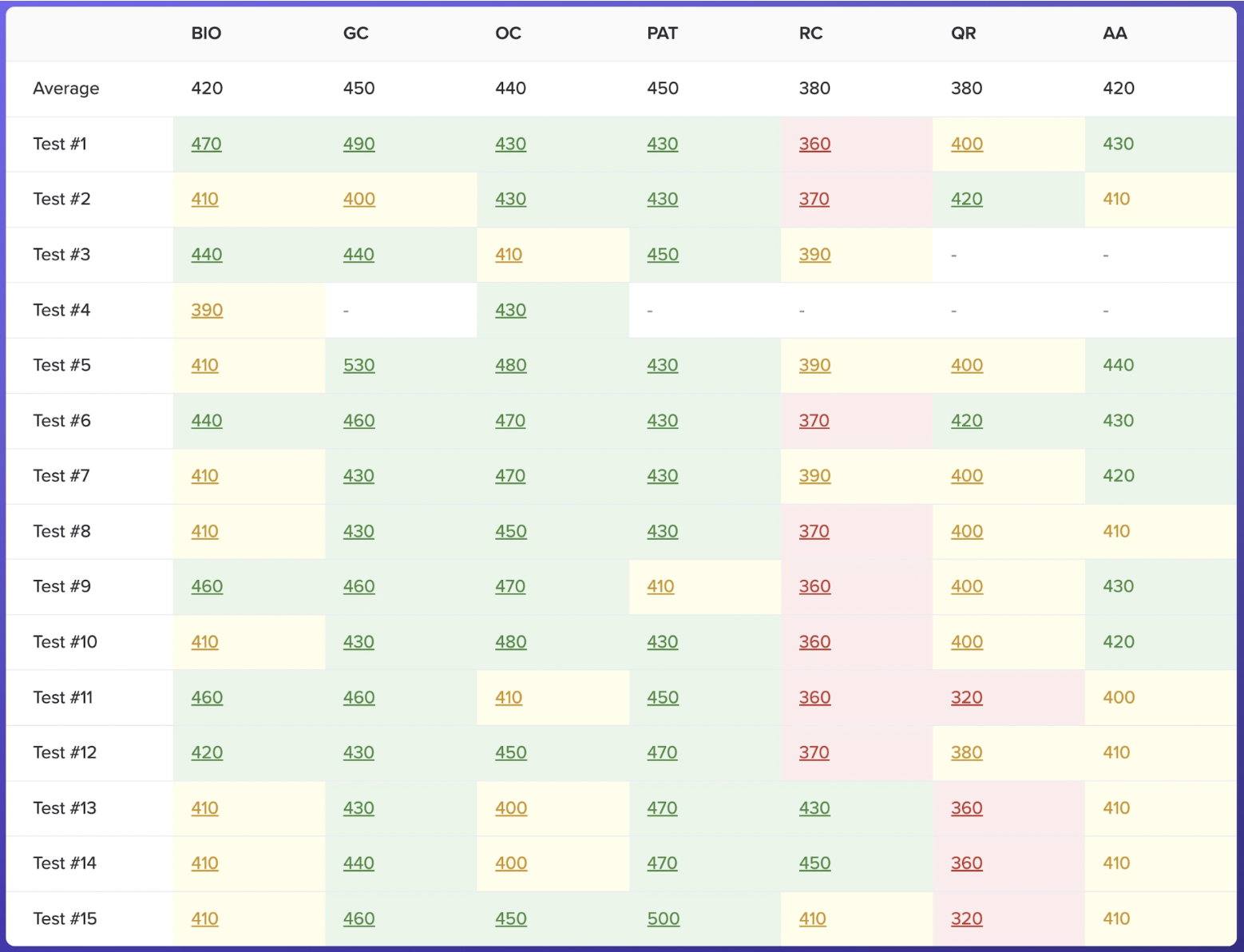Hi everyone! I’m Matthew, and I took the DAT the summer after my sophomore year, scoring a 470 AA (23 AA) using DAT Bootcamp. I originally scheduled my exam for mid-July, but the week of the test I wasn’t sleeping from anxiety—my practice scores felt stuck, never higher than a 440 AA (20 AA), and I convinced myself the real thing would mirror them. Two days before test day, I pushed my exam to mid-August. Those extra four weeks weren’t perfect (I wasn’t as disciplined as I could have been), but they gave me time to breathe. When I finally sat for the exam, I realized Bootcamp had already given me everything I needed—I just had to trust my preparation.
How I Reviewed
When I reviewed, I didn’t just check the correct answer. I made myself look at every option and understand why it was wrong. Even if I got a question right, if I couldn’t explain the distractors, I flagged it yellow to revisit later. That habit forced me to deepen my reasoning and prevented “lucky guesses” from slipping through.
Biology
I bought the 6-month plan and started mid-January, focusing only on biology during mysophomore semester. This Jan–May stretch of time was where I put in 10–120 minutes a day,which I believe contributed to being my strongest section. By summer, biology felt like review rather than brand-new content. I worked through all the Bootcamp videos, Qbanks, and Anki decks. I also read through the entier biology textbook called “high yield notes” and highlighted every term that I didn’t know, then I would review each highlighted portion a few times a week until I had them down.
General Chemistry
Straightforward and high-yield. I highly suggest doing the entire Qbank at least twice as I found that solving problems taught me more than re-watching videos. I focused on speed: moving quickly through questions, skimming explanations for the main takeaway, and leaving deep dives for concepts I repeatedly missed.
Organic Chemistry
Since I had just finished Ochem in school, I skipped most of the videos and jumped into the banks. The reaction sheet pulled everything together, and instead of memorizing every mechanism, I leaned on reaction trends and reagent logic.
PAT
This was another area I worked on gradually from January through May. I used the grid method for hole punching and the tally method for cube counting—these became my strongest PAT sections on practice exams. For pattern folding, Keyholes, and TFE, consistency was the key. Doing them regularly trained my brain to recognize patterns and rely on process of elimination. Angle ranking, on the other hand, was unpredictable and hit-or-miss, so I focused more on the sections where I could build higher confidence.
Reading Comprehension
It wasn’t until the last three of the 15 practice tests that I finally found a strategy that worked for me. I used a version of the search-and-destroy method, but with heavy highlighting. I’d start by reading the first two paragraphs to get the overall direction, then answer the first few questions tied to them. I repeated this process with the next few paragraphs, gradually building a highlighted map of key words throughout the passage. By the time I finished reading, I’d already answered a third of the questions, and for the rest I could read through a question and know which paragraph or two it was referencing. This method gave me enough structure to stay efficient while still understanding the big picture.
Quantitative Reasoning
This was my most difficult section, only because I didn’t commit the time necessary to really understand the content. If I were to redo it, I would focus on the QR banks similarly to how I did for chemistry.
Discipline (a little unhinged)
I made a rule: I couldn’t move my feet until I finished my entire deck of Anki. Sitting still through every card—even when I wanted to get up after 30 minutes—pushed me to power through. It sounds unhinged, but it worked. I ended up flying through my flashcards each day just to earn the right to stand up. This approach worked especially well for biology Anki, but I applied the same idea to GC and QR Qbanks—finish the set quickly and stay consistent.
General Tips/Advice
A huge mistake I made was letting a subject sit untouched for more than three days—make sure to review all sections regularly, even briefly. I also listened to Bootcamp Biology Podcast on Spotify when I exercised. Combining listening with reading and qbanks gave me multiple ways to learn the same material. On top of that, I read through dozens of Bootcamp success stories, paying close attention to what the top scorers did, which helped me shape my own approach. Finally, logging my study hours in a spreadsheet kept me accountable and reminded me that every small block of time adds up.
Takeaways
Don’t just mark right vs. wrong—learn why every option is wrong.
Hit the Qbanks hard (twice if possible), especially for Chem and QR.
If possible, take the 6-month plan and consistently work on Biology and PAT, which became my highest scores.
Build discipline systems—even quirky ones—that keep you consistent. Remember Bootcamp often overprepares you. Practice scores are tools, not predictions.
The DAT is intimidating, but your preparation is enough. Trust the work, manage the anxiety, and you might just surprise yourself the same way I did.
















.jpg)
.jpg)


.jpg)
.jpg)

.jpg)
.jpg)
.jpg)




